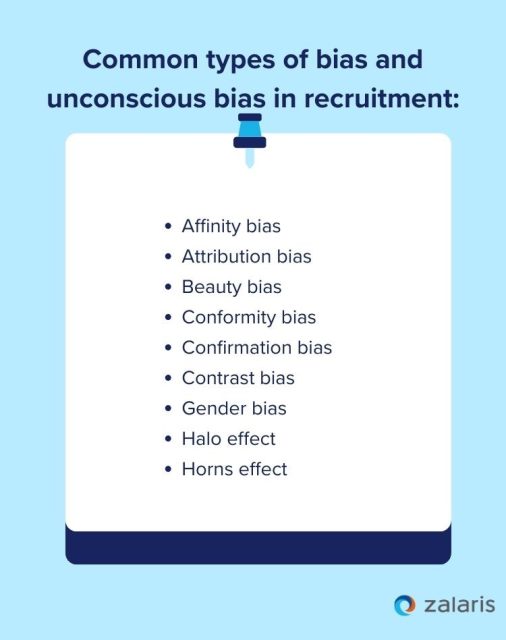This force goes by the name of Diversity, Equity, and Inclusion (DE&I), and its resonance reverberates far beyond the confines of HR manuals and corporate mission statements.
In this article we shall uncover the veiled biases that lurk within recruitment processes and explore strategies to foster diversity, equity, and inclusion (DE&I) in the modern workplace.
Addressing Bias and Unconscious Bias to Advance DEI in Recruitment
Understanding DE&I
Diversity, Equity, and Inclusion, abbreviated as DE&I, are not just corporate jargon; they are the pillars supporting a paradigm shift in organisational culture. Diversity, extending beyond the visible markers of race, gender, and age, encapsulates the richness of varied experiences, backgrounds, and perspectives. Equity ensures a level playing field, dismantling systemic barriers that impede the progress of individuals from different walks of life. Inclusion goes beyond a mere invitation – it’s the creation of an environment where every voice is not only heard but also valued.
What is DE&I?
DE&I stands for Diversity, Equity, and Inclusion. It represents a commitment to creating workplaces that embrace and celebrate differences, ensure fairness and opportunity for all, and foster a sense of belonging where every individual feels valued and respected.
Picture a corporate environment where a multitude of voices, experiences, and backgrounds converge, forming a vibrant mosaic of perspectives. This is the promise of DE&I – an inclusive workplace where differences are not only acknowledged but celebrated. Yet, this promise encounters a significant hurdle in the recruitment process, where biases, both overt and subtle, can thwart the realisation of a truly diverse and inclusive workforce.
The power of DE&I in the workplace
“Did you know companies with more than 30% women executives are more likely to have above-average profitability than companies with less than 10%?”
Research has consistently shown that diverse teams outperform homogenous ones in terms of innovation, creativity, problem-solving, and financial performance. By bringing together individuals with different backgrounds, experiences, and perspectives, organisations can tap into a broader range of ideas, insights, and solutions, driving innovation and growth.
It has also been observed that diverse management increases revenue by 19%.
Moreover, diverse teams are better equipped to understand and serve diverse customer bases, leading to improved customer satisfaction and loyalty. Inclusive workplaces also cultivate a culture of empathy, where employees from all backgrounds feel valued, respected, and empowered to contribute their best work. This sense of belonging fosters higher levels of employee engagement, retention, and productivity, as individuals are more likely to invest their time and energy in organisations that prioritise their well-being and professional development. In essence, DE&I is a strategic imperative for organisations seeking to thrive, however, the true measure of success lies in the meticulous implementation of these principles.
Recruitment: The nexus of DE&I implementation
Recruitment serves as the frontline in the battle for the implementation of diversity and inclusion. Its where organisational values are put into practice—or fall by the wayside. Biases, both conscious and unconscious, lurk beneath the surface, shaping who gets hired and who gets left behind.
Unconscious biases, in particular, can be insidious, operating beyond our awareness and shaping our perceptions and decisions in subtle ways. From the way we evaluate resumes to the questions we ask in interviews, biases can seep into every stage of the recruitment process, perpetuating inequalities and stifling diversity.
Consider, for instance, the initial screening of resumes. Unconscious biases may lead recruiters to gravitate toward candidates whose names, educational backgrounds, or previous experiences align with their own, inadvertently excluding qualified individuals from underrepresented groups. Similarly, during interviews, unconscious biases can manifest in the form of subtle microaggressions, leading to differential treatment based on factors such as race, gender, or socioeconomic status. These biases, though often unintentional, have profound implications for the composition and diversity of the workforce.
To truly advance DE&I initiatives, organisations must confront and mitigate the influence of conscious and unconscious biases at every stage of the recruitment process.
Fostering awareness of the various types of biases is the crucial first step in this endeavour. Let’s delve into these biases to better understand how they can be addressed.
Unraveling bias and unconscious bias in recruitment
Bias, defined as the inclination to favour or disfavour individuals, groups, or entities based on irrelevant or unfair criteria, can subtly influence decision-making processes in recruitment. Unconscious bias, a particularly insidious form of bias, operates without conscious awareness or control, making it imperative for organisations to identify and address these biases to ensure fair and equitable hiring practices.

Let’s explore some common types of bias and unconscious bias in recruitment, along with examples:
Affinity bias: This bias occurs when recruiters favour candidates who share similar qualities or backgrounds, such as alma mater or hobbies. For instance, a recruiter might preferentially select a candidate from their own university, overlooking potentially better-suited candidates from different institutions.
Attribution bias: This bias involves judging candidates based on perceived personality traits rather than objective performance. For example, assuming that a quiet candidate lacks assertiveness, regardless of their demonstrated abilities and achievements.
Beauty bias: This bias occurs when recruiters favour candidates based on physical appearance rather than qualifications. For instance, overlooking a highly skilled candidate in favour of a more conventionally attractive one.
Conformity bias: This bias occurs when recruiters prioritise candidates who align with existing organisational norms or preferences, disregarding individual merit. For example, rejecting an innovative candidate because their ideas diverge from established practices.
Confirmation bias: This bias involves seeking out information that validates preconceived notions while disregarding contradictory evidence. For instance, focusing only on positive aspects of a preferred candidate while overlooking their shortcomings.
Contrast effect: This bias arises when candidates are evaluated relative to each other rather than against objective criteria. For example, rating a candidate higher or lower based on comparison with other applicants rather than their qualifications.
Gender bias: This bias occurs when candidates are favoured or discriminated against based on gender identity. For instance, assuming that female candidates are less capable than their male counterparts, irrespective of qualifications.
Halo effect: This bias occurs when a positive impression of a candidate in one area influences perception of other attributes. For example, assuming that a candidate with an impressive educational background excels in all areas, without assessing specific competencies.
Horns effect: This bias involves forming a negative impression of a candidate based on a single flaw, leading to unfair evaluation. For example, assuming incompetence based on minor errors in a CV, disregarding relevant skills and experience.
By recognising and mitigating these biases, organisations can foster a more inclusive and equitable recruitment process, ensuring that candidates are evaluated based on their merits rather than irrelevant factors.
The detrimental impacts of bias in recruitment
Companies that are more diverse are 70% more likely to enter new markets.
The repercussions of bias in recruitment extend far beyond individual candidates, casting a shadow over the entire organisation. Biased hiring practices not only perpetuate a lack of diversity within the workforce but also hinder the organisation’s ability to harness the full spectrum of talents and perspectives. This dearth of diversity stifles innovation, creativity, and growth, as fresh ideas and alternative viewpoints remain untapped. Moreover, the prevalence of bias undermines employee morale, erodes trust, and diminishes engagement, particularly among individuals from underrepresented groups who may feel marginalised or undervalued within the organisational framework.
Strategies to mitigate bias in recruitment
According to a survey conducted by ETU, 81% of employees expressed a higher likelihood of remaining with an employer who prioritises Diversity, Equity, and Inclusion (DE&I), while 78% indicated a greater tendency to recommend their employer to others under such conditions.
Mitigating bias in recruitment demands a comprehensive and proactive approach, encompassing awareness, education, and strategic interventions. Organisations can deploy various strategies to counteract bias at every stage of the recruitment process.
Implementing blind resume screening, for instance, helps strip away identifying information, enabling recruiters to focus solely on candidates’ qualifications and experience. Standardising interview processes and criteria minimises subjective evaluations, fostering fairness and consistency in candidate assessments.
Additionally, investing in diversity training for recruiters and hiring managers cultivates awareness of biases and equips them with the tools to make more informed and unbiased decisions. Embracing technology such as artificial intelligence and machine learning can further augment bias mitigation efforts by automating aspects of recruitment and flagging potential biases in job descriptions or candidate evaluations.
Embracing diversity, equity, and inclusion
Bias and unconscious bias in recruitment present formidable obstacles to achieving diversity, equity, and inclusion in the workplace. However, by acknowledging the existence of bias, raising awareness, and implementing proactive measures, organisations can chart a path towards more equitable and inclusive recruitment practices.
Through concerted efforts to mitigate bias, organisations can create environments where every individual has the opportunity to contribute and succeed, ultimately driving collective success and organisational excellence.
This article was written by Zalaris. You can find them in the Software Suppliers area of the website here.






